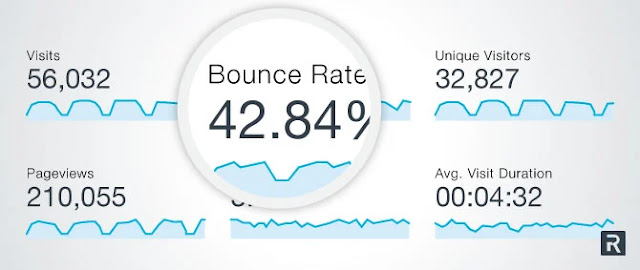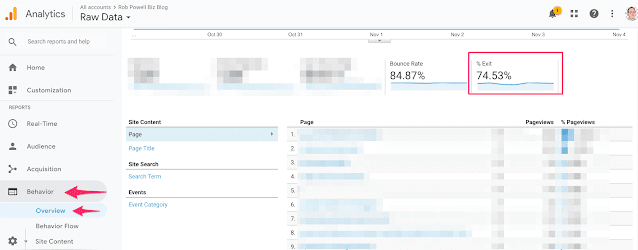Bounce rate and exit rate are two of the best metrics in Google Analytics. These are often thought to be similar but actually, both of those present a special scenario of page-level metrics.
Exit Rate (Visitor visits multiple pages)
Suppose any website in your site receives 50 page views covering 50 sessions. But on 5 of these sessions, visitors leave your site from this page. this suggests the online page has a 10% exit rate.
Bounce Rate (Visitor visits one page)
Taking the above example, 20 of the page views starts with the page because of the main landing page. Visitors leave the location from the landing page itself involving 10 of the 20 sessions. during this case, the bounce rate of an equivalent page would be 50%.
Hence, at an equivalent time, any website can have a special bounce rate and a different exit rate. within the example above, the bounce rate is 50% while the exit rate is 10% of an equivalent page. this is often an exquisite a part of Google Analytics and page-level metrics.

What’s the difference between the exit rate and bounce rate?
Whether you measure the bounce rate on an internet page or the exit rate, you’re counting the number of individuals who leave your site. The difference lies in what they will tell you about your site’s effectiveness.
The bounce rate measures the share of individuals who attend a page then leave without visiting the other page. It doesn’t matter if the visitors stayed 40 seconds or 10 minutes—every bounce counts. counting on the page’s content, which will not necessarily be bad. If a visitor lands on a page together with your address and hours, that perhaps all the knowledge they have. When additional action is predicted, though, it can signal a drag.
The exit rate indicates where people exit your Website after visiting multiple pages. While this number includes all interactions, from orders and form submissions to simple views, it can reveal a problem with the location. A high exit rate from a content page won’t depart warning bells. On the opposite hand, a high rate on an order page—particularly among those that don’t make a purchase—means something could also be wrong with the page.
How to Reduce Bounce Rate
It’s not always easy to inform why some visitors are landing on a particular page, thinking “Nah,” and immediately running off to another website. Sometimes, there are deeper site issues at play.
However, there are a couple of belongings you can do to form pages a touch less likely to drive visitors away:
Improve readability: Get obviate the weird fonts, intricate background images, and soft colors. hack big paragraphs and avoid long walls of text.
Avoid unnecessary pop-ups: If a visitor is finding out your site, it’s rarely an honest idea to distract them by shoving something that they didn’t ask to ascertain ahead of whatever they were watching.
Load faster: Don’t expect visitors to possess endless patience while a page downloads many megabytes of media content just to make a touching atmosphere.
Include a call to action: Sometimes visitors sort of a page just fine, but don’t have any direction for where to travel after they’re done reading it. all of your pages got to do a minimum of some explicit shepherding to urge visitors to interact with the location within the way you would like them to.
Better keywords and targeted landing pages: confirm your SEO endeavors are bringing in visitors who want what your site is offering, which they’re arriving at pages that are relevant to their interests.

How to Reduce Exit Rate
Many of an equivalent approach wont to reduce the bounce rate is often applied here also. Just confirm you don’t have any “dead end” pages that haven't any obvious or logical links back to the conversion funnel.
These pop-ups read cursor location and mouse speed to predict when a visitor is close to leaving your page. Then, the pop-up entices them to remain, or a minimum of explaining why they’re leaving.








No comments:
If you have any doubts, Please let me know